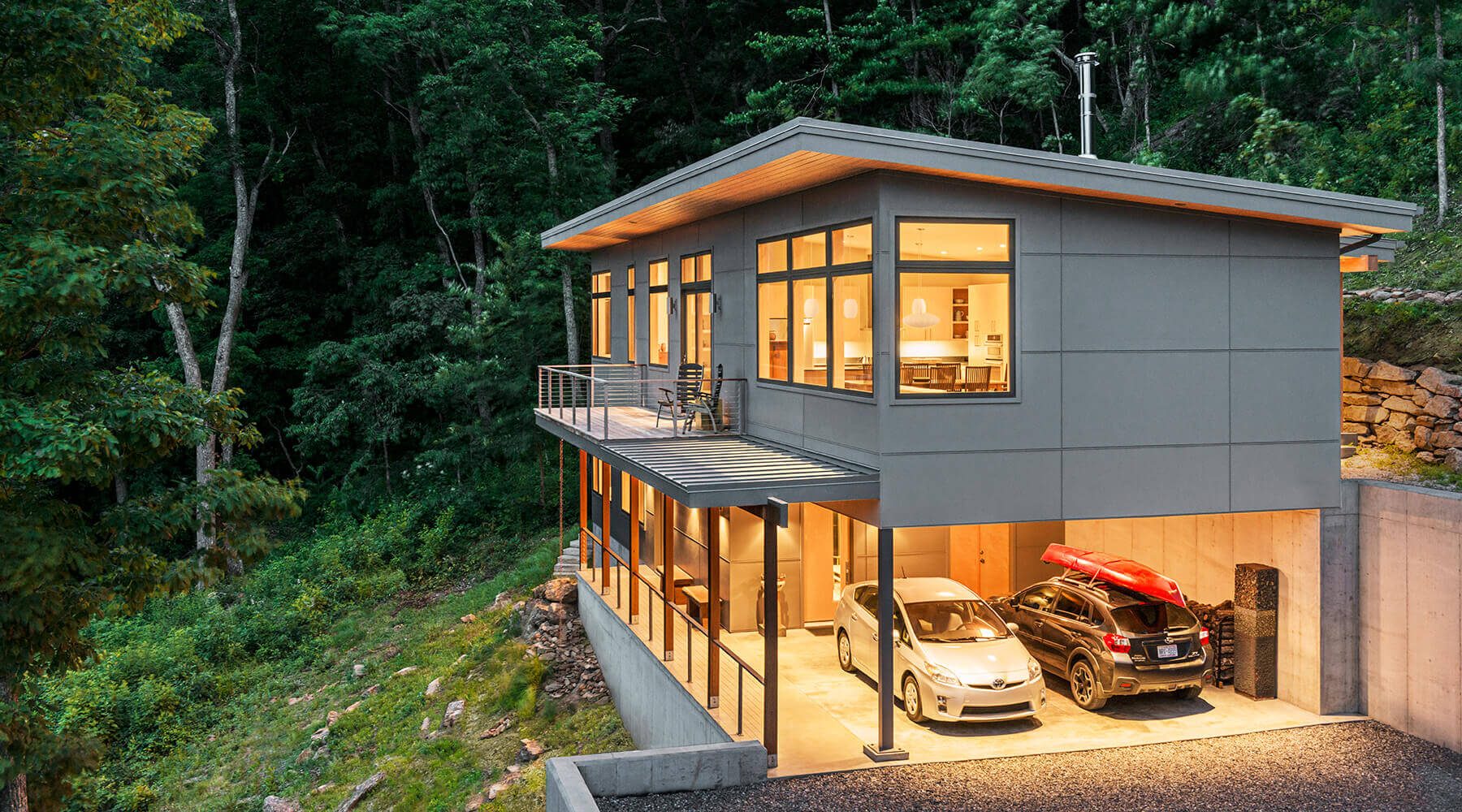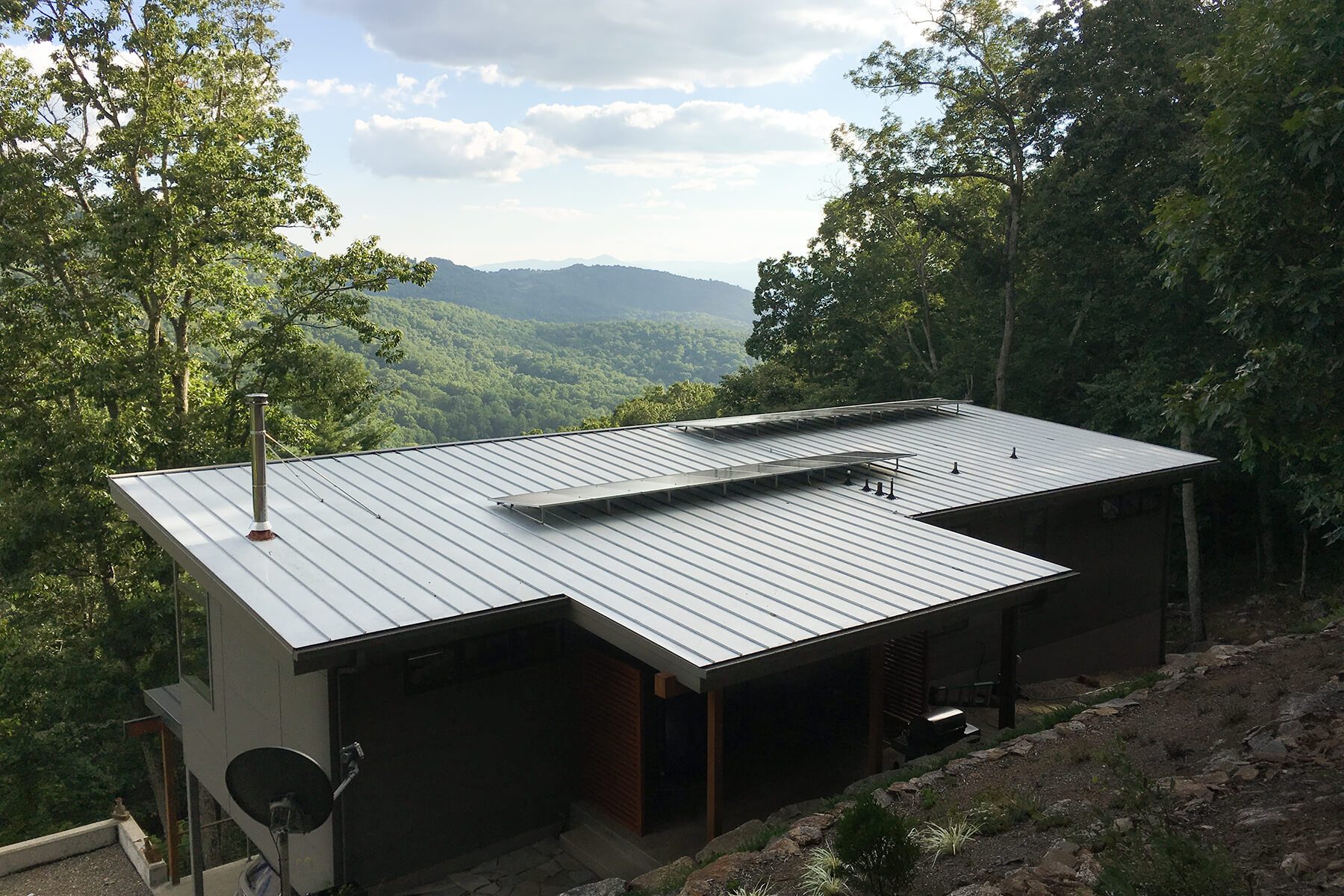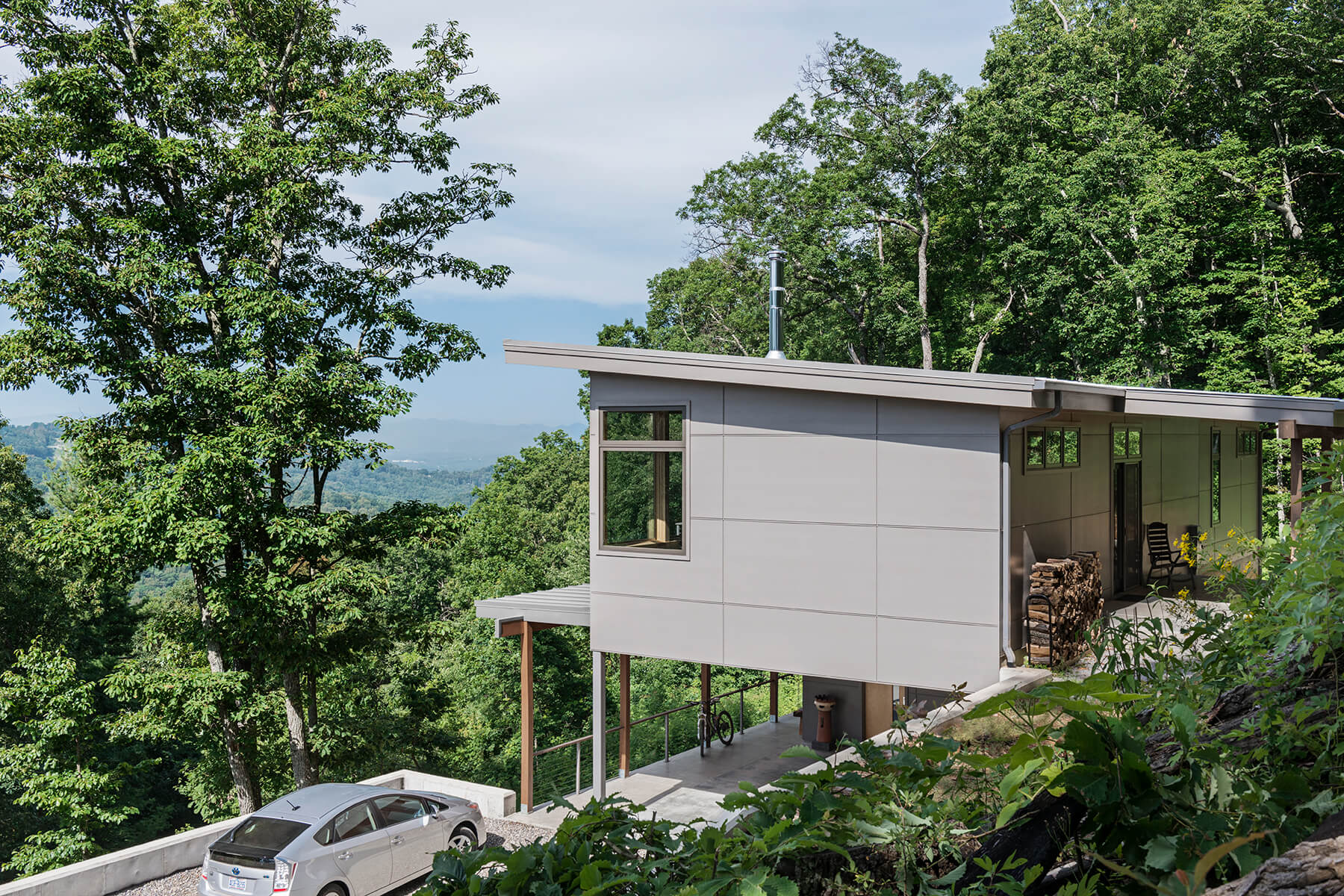
Craven Gap Residence
Location: Asheville, NC
Type: New Construction
This modern net-zero residence sits on five acres with great views looking down the Beaverdam Valley. The house is on a south-facing slope and allowed the owners to build the energy efficient house they were dreaming of.
Sustainable Highlights
- Net Zero Energy certified by International Living Future Institute – the first in North Carolina
- Passive solar design
- 5.13 kW Solar array was the smallest used on an NZE Certified structure at the time of certification
- EnergyStar rated
Project Team
Builder: Standing Stone Builders
Photographer: Todd Crawford

The very steep slope required significant retaining walls, so we developed a narrow floor plan that worked parallel to the topography. This narrow layout also allowed for daylight to enter on multiple sides of most rooms. The upper level has the best valley and mountain ridge views so the main living spaces and master bedroom are organized on the second floor, above a carport, guest bedrooms and an office. Efficient space planning packed a lot of functionality into this 2,100 square foot house. Outdoor spaces to the north and south flank the main living space. The outdoor spaces visually and physically connect the living area to the outdoors.

Our clients were looking for modern architecture with a low maintenance exterior and a clean-lined and comfortable interior. We developed a light interior palette that provides a simple backdrop for an eclectic mix of antique and modern furniture. The cantilevered maple shelving is a design feature that displays our client’s art and craft collection and greets visitors as they arrive at the top of the central stair.
A top design priority for the home was minimizing energy use as much as possible while using cost effective and conventional building techniques. Polished concrete slabs are used to provide the proper thermal mass for passive solar energy, and roof overhangs are calculated for the correct year-round sun exposure. An efficient thermal envelope, ERV, and mechanical system also minimize energy use.


Certified Net Zero
This modern net zero home is the first home in North Carolina to earn Zero Energy certification from the International Living Future Institute. Part of the Living Building Challenge, Zero Energy Certification is the most ambitious of all energy certifications, requiring actual, rather than modeled, performance. This means to receive certification, the Craven Gap residence had to be operational for at least twelve consecutive months prior to evaluation.
“Energy efficiency has come a long way the past 20 years, and zero energy buildings are the new goal,” said Duncan McPherson, Principal of Altura Architects and lead architect on the project. “The Living Building Challenge and other groups continue to raise the bar and push the design and construction industry to do their part in addressing climate change crisis.”
The Craven Gap Residence is not only the first Zero Energy Certified Project in North Carolina, it is the first project in North Carolina to achieve any level of certification through ILFI. The home also currently has the smallest photovoltaic array of any Zero Energy Certified project, showing that large arrays aren’t necessary to achieve Zero Energy. Read the case study on ILFI’s website.
Energy efficiency was a major design priority for the home owners. Their goal from the start was to minimize energy use as much as possible while also using cost effective and conventional building techniques.
Our solution was to design a passive solar home that was pre-wired for future solar panel installation. Elements of the design that contribute to the Zero Energy certification include:




